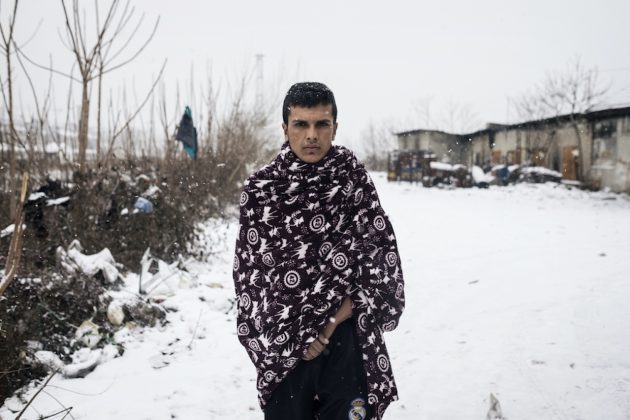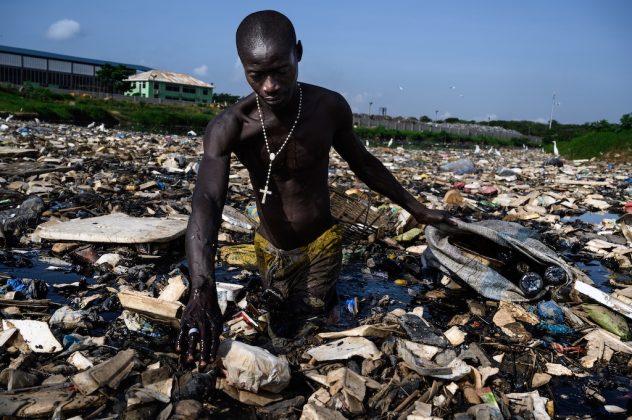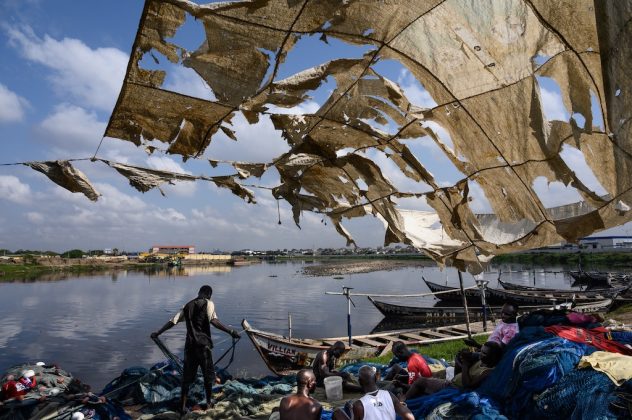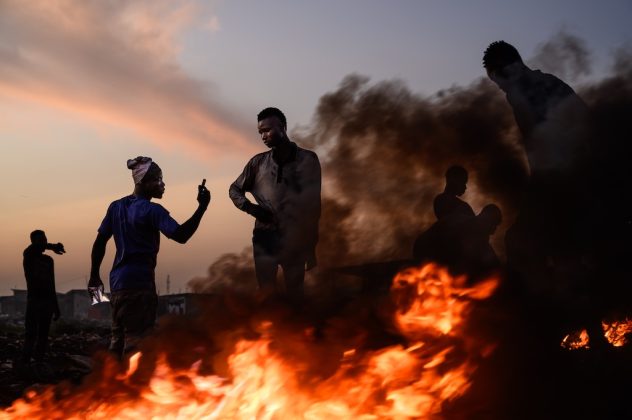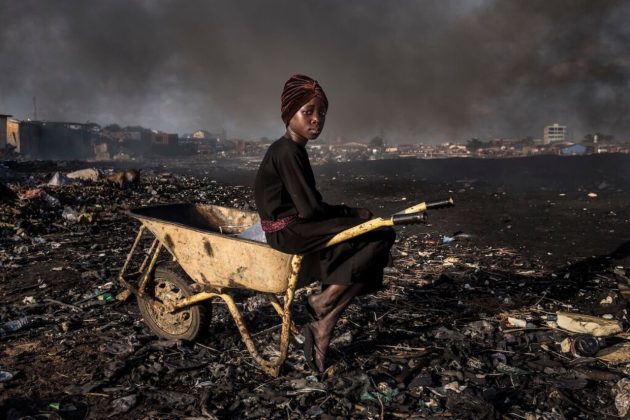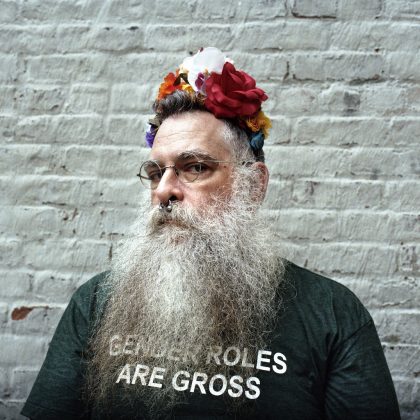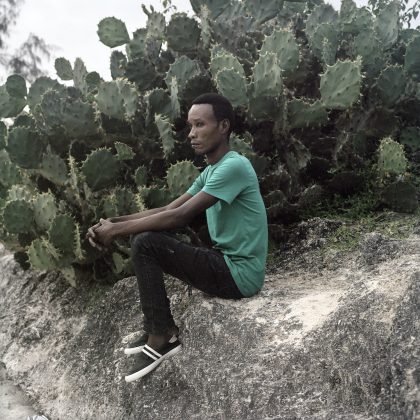1 of 20
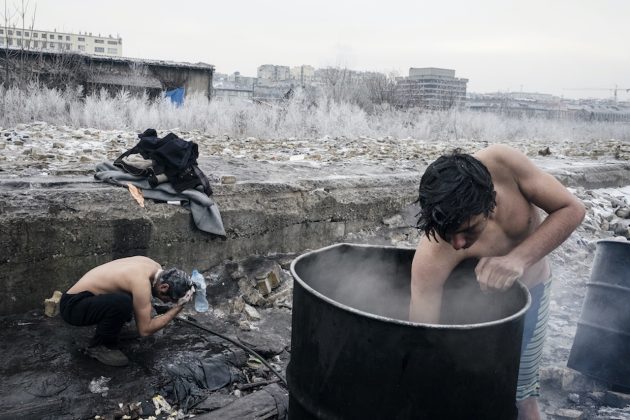
I fotografi coinvolti nelle mostre di Pangea Photo Festival 2022 affrontano grandi tematiche dell’attualità globale che accendono domande su come questi temi impattino sulle comunità locali e sulla vita di ciascuno di noi. Il festival fotografico di Castelnovo ne’ Monti, in provincia di Reggio Emilia, durerà fino 18 settembre con cinque mostre open air visitabili 24 ore su 24 e 7 giorni su 7.
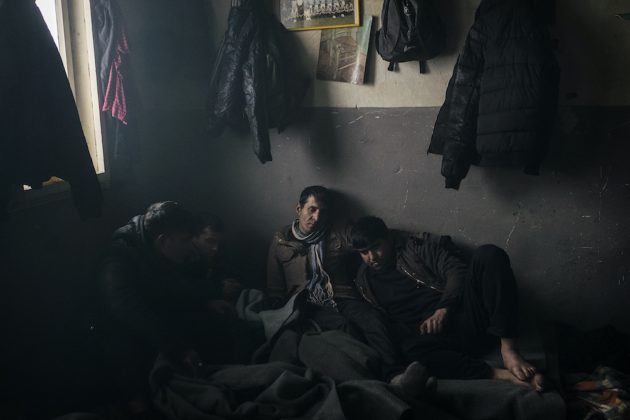
13 January, 2017
Early morning. A group of Afghan stranded in Belgrade, Serbia.
The tightening of the so-called Balkan route into the European Union stranded thousands of refugees attempting to travel through Serbia to seek a new life in Europe. Many spent the freezing winter in derelict warehouses behind Belgrade's main train station. The UNHCR reported that the number of refugees in Serbia had increased from 2,000 in June 2016 to more than 7,000 by the end of the year. Some 85 percent were accommodated in government facilities, most of the others slept rough in the capital. Francesco Pistilli, Lives in Limbo, Belgrade Serbia
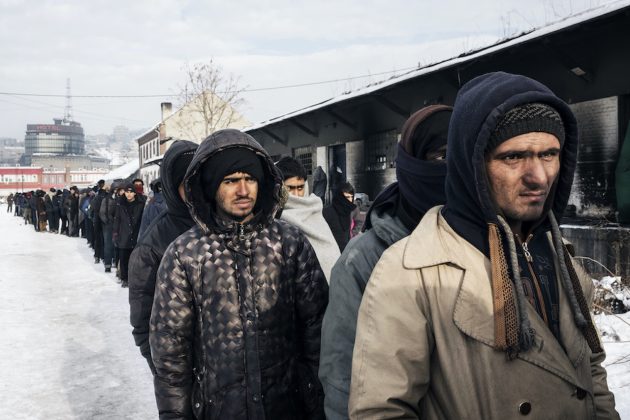
12 January, 2017
Refugees in Belgrade, Serbia, queue for food distribution. They receive one meal a day from an international group of volunteers.
The tightening of the so-called Balkan route into the European Union stranded thousands of refugees attempting to travel through Serbia to seek a new life in Europe. Many spent the freezing winter in derelict warehouses behind Belgrade's main train station. The UNHCR reported that the number of refugees in Serbia had increased from 2,000 in June 2016 to more than 7,000 by the end of the year. Some 85 percent were accommodated in government facilities, most of the others slept rough in the capital. Francesco Pistilli, Lives in Limbo, Belgrade Serbia
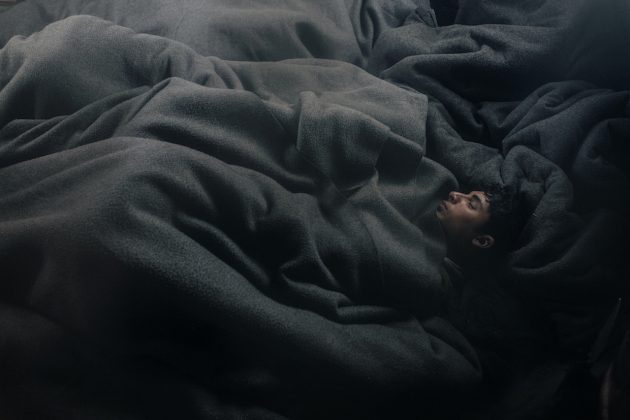
12 January, 2017
Young Afghans sleep in an abandoned train wagon in Belgrade.
The tightening of the so-called Balkan route into the European Union stranded thousands of refugees attempting to travel through Serbia to seek a new life in Europe. Many spent the freezing winter in derelict warehouses behind Belgrade's main train station. The UNHCR reported that the number of refugees in Serbia had increased from 2,000 in June 2016 to more than 7,000 by the end of the year. Some 85 percent were accommodated in government facilities, most of the others slept rough in the capital. Francesco Pistilli, Lives in Limbo, Belgrade Serbia
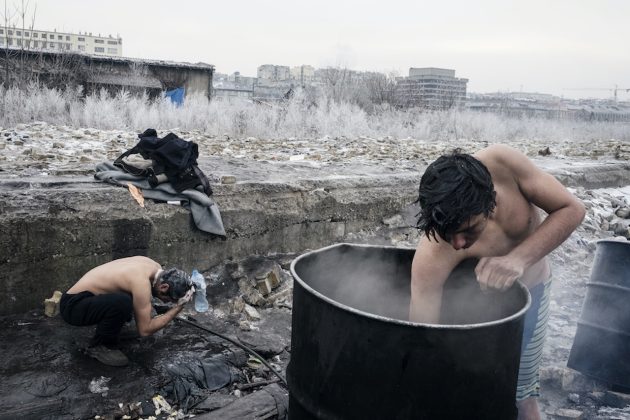
15 January, 2017
Two Afghan refugees wash outdoors in Belgrade.
The tightening of the so-called Balkan route into the European Union stranded thousands of refugees attempting to travel through Serbia to seek a new life in Europe. Many spent the freezing winter in derelict warehouses behind Belgrade's main train station. The UNHCR reported that the number of refugees in Serbia had increased from 2,000 in June 2016 to more than 7,000 by the end of the year. Some 85 percent were accommodated in government facilities, most of the others slept rough in the capital. Francesco Pistilli, Lives in Limbo, Belgrade Serbia
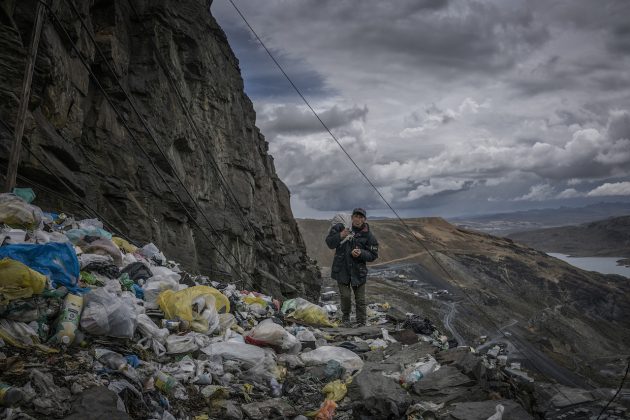
La Rinconada - Perù, 2018
© James Whitlow Delano/Photo Op
Un minatore torna alla sua casa di lamiera, lungo la parete rocciosa scoscesa e carica di spazzatura di plastica monouso, nell’insediamento minerario de La Rinconada.
I minatori, per lo più indigeni Quechuas e Aymara, sono sottoposti al tradizionale sistema del "cachorreo", per 30 giorni lavorano senza essere retribuiti dall’azienda che detiene la concessione mineraria; una volta al mese è loro permesso di scavare e tenere per sé tutto l’oro trovato in quella giornata di lavoro. La fortuna gioca un ruolo importante, poiché i minatori potrebbero guadagnare da zero a una fortuna.
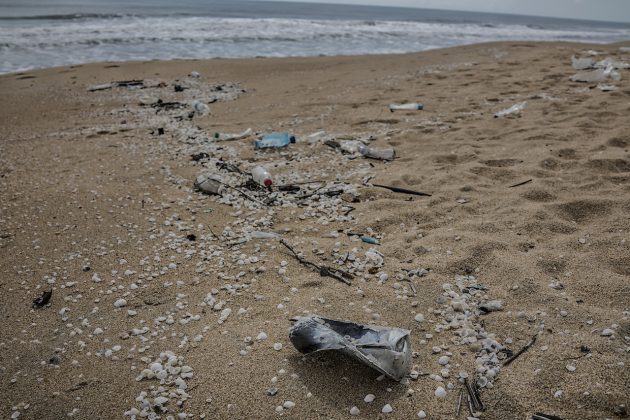
Sud di Marang, Terengganu - Malesia, 2019
© James Whitlow Delano/Photo Op
Bottiglie di plastica in PET su una spiaggia idilliaca della costa malese del Mar Cinese. La Malesia è l'ottavo paese al mondo per la produzione di rifiuti plastici dispersi nell’oceano, come dimostrano le tonnellate di plastica trascinate a riva sulle sue coste.
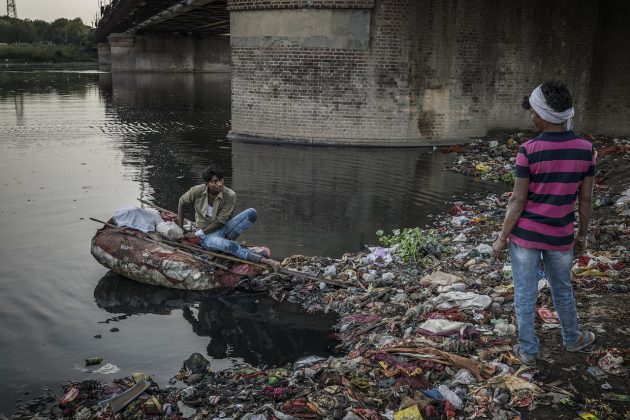
Delhi - India, 2018
© James Whitlow Delano/Photo Op
Un barcaiolo su una zattera realizzata con materiale plastico e avanzi di legno, raccoglie i rifiuti di plastica riciclabile che si accumulano lungo le sponde del fiume “biologicamente morto” Yamuna (il secondo affluente del Gange). Può guadagnare fino a 5000 rupie (circa 74 dollari statunitensi) al mese grazie a questa attività.
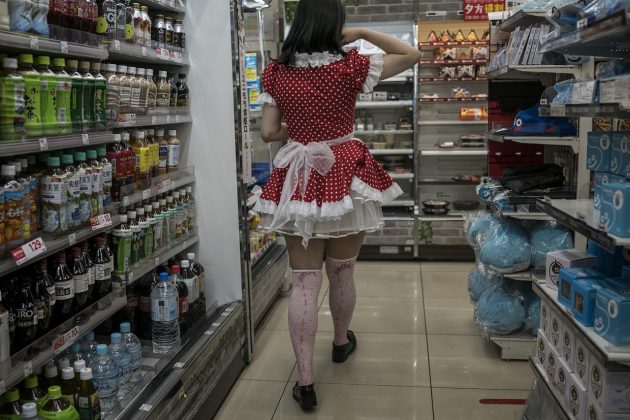
Akihabara, Tokyo - Giappone, 2018
© James Whitlow Delano/Photo Op
Imballaggi di plastica monouso riempiono gli scaffali di un minimarket a Tokyo.
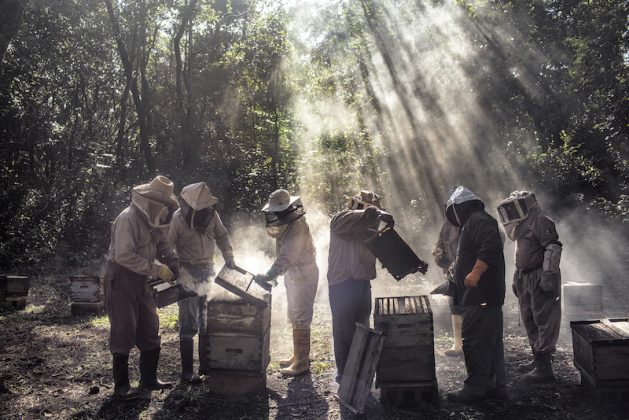
Tinun, Mexico-November 4th, 2018: A group of beekeepers tending to their hives in the off season while the beas are getting ready to start polinating as flowers are just beginning to bloom. The group is led by Professor Russei Armin Balan (cousin of the recently decesed Anastacio Balan Osalde) who has been certified in a course to apply techniques in producing organic honey. Mayan beekeepers of the Yucatan Peninsula have been grappling with contaminated honey ever since transgenic soy was introduced into the farming of the region. The soy is produced primarily by the continually expanding Mennonite community by a government supported subsidies program. Traces of the soy and glyphaste, the main agrotoxin used to kill off weeds around the resistant soy have been found in the honey which is of organic quality and which the Mayans export to Europe mainly through Germany. The honey which must now be labeled when it contains elements of the soy or toxins is being bought now at a much lower rate. The mennonites are also buying up land from the indigenous communities and cutting down virgin forrest land in order to expand there existing communities and create moer farm land. As a result many bees also disappear, wtih diminishing flowers to polinate. In 2015 the supreme court in Mexico ruled to prohibit the use of transgenic soy in the country, yet soy farmers have continued to plant the modified version and operate with impunity despite the law. Nadia Cohen
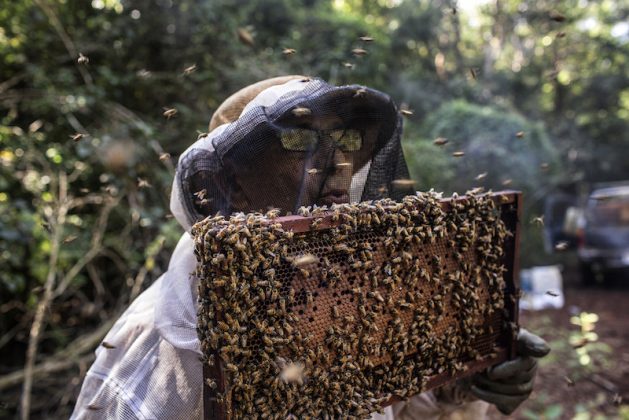
Chives Mennonite Camp, Hecelchakan, Mexico-November 5th, 2018: Carlos Rafael Ortegon Cervera blowing on his bees to move them from a specific area without having to touch and hurt them. Wtih roughtly 600 hives Ortegon is considered to have a larger beekeeping operation. Many of his hives are nestled inside of Mennonite Camps, like Chives, the second established Mennonite Camp in The Yucatan. He pays the Mennonites to be able to keep his bees on their property in honey although his father, one of the first beekeepers in the Yucatan had his hives their long before the Mennonites arrived. He is frustrated because the honey he produces, which he says is one of the best quality honey in the world, is never consumed in it's pure form, but rather is exported to Germany and mixed with European honey to improve the flavor and quality. Mayan beekeepers of the Yucatan Peninsula have been grappling with contaminated honey ever since transgenic soy was introduced into the farming of the region. The soy is produced primarily by the continually expanding Mennonite community by a government supported subsidies program. Traces of the soy and glyphaste, the main agrotoxin used to kill off weeds around the resistant soy have been found in the honey which is of organic quality and which the Mayans export to Europe mainly through Germany. The honey which must now be labeled when it contains elements of the soy or toxins is being bought now at a much lower rate. The mennonites are also buying up land from the indigenous communities and cutting down virgin forrest land in order to expand there existing communities and create moer farm land. As a result many bees also disappear, wtih diminishing flowers to polinate. In 2015 the supreme court in Mexico ruled to prohibit the use of transgenic soy in the country, yet soy farmers have continued to plant the modified version and operate with impunity despite the law. Nadia Cohen
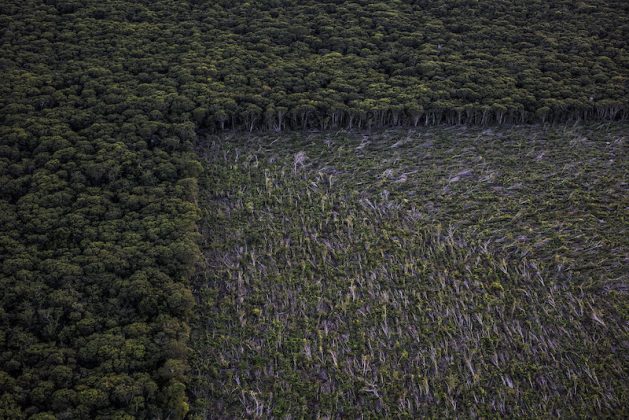
Hopelchen, Mexico-November 7th, 2018: An areal view of the deforestation being carried out with heavy machinery in the region of Campeche. Mayan beekeepers of the Yucatan Peninsula have been grappling with contaminated honey ever since transgenic soy was introduced into the farming of the region. The soy is produced primarily by the continually expanding Mennonite community by a government supported subsidies program. Traces of the soy and glyphaste, the main agrotoxin used to kill off weeds around the resistant soy have been found in the honey which is of organic quality and which the Mayans export to Europe mainly through Germany. The honey which must now be labeled when it contains elements of the soy or toxins is being bought now at a much lower rate. The mennonites are also buying up land from the indigenous communities and cutting down virgin forrest land in order to expand there existing communities and create moer farm land. As a result many bees also disappear, wtih diminishing flowers to polinate. In 2015 the supreme court in Mexico ruled to prohibit the use of transgenic soy in the country, yet soy farmers have continued to plant the modified version and operate with impunity despite the law. Nadia Cohen

